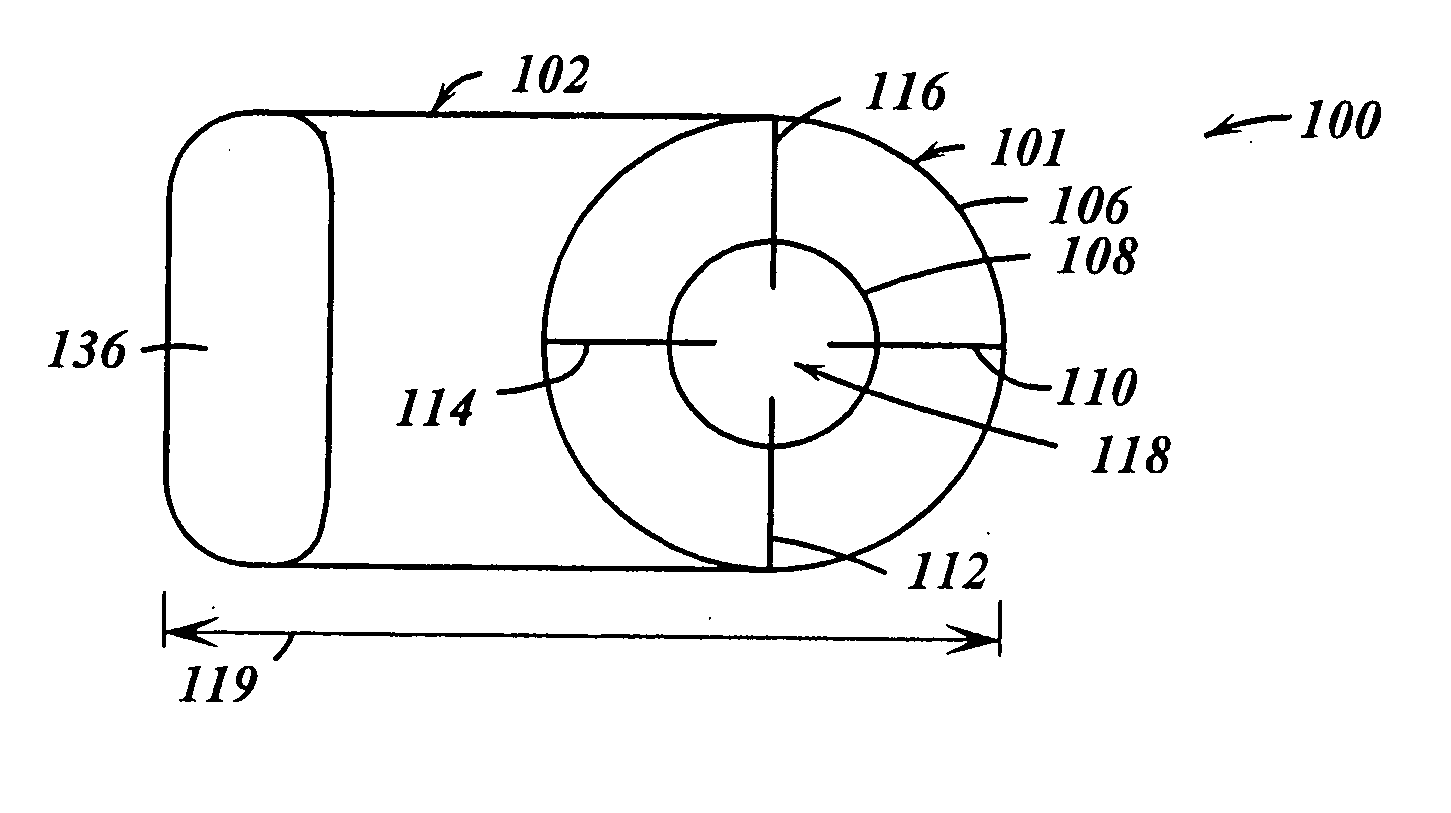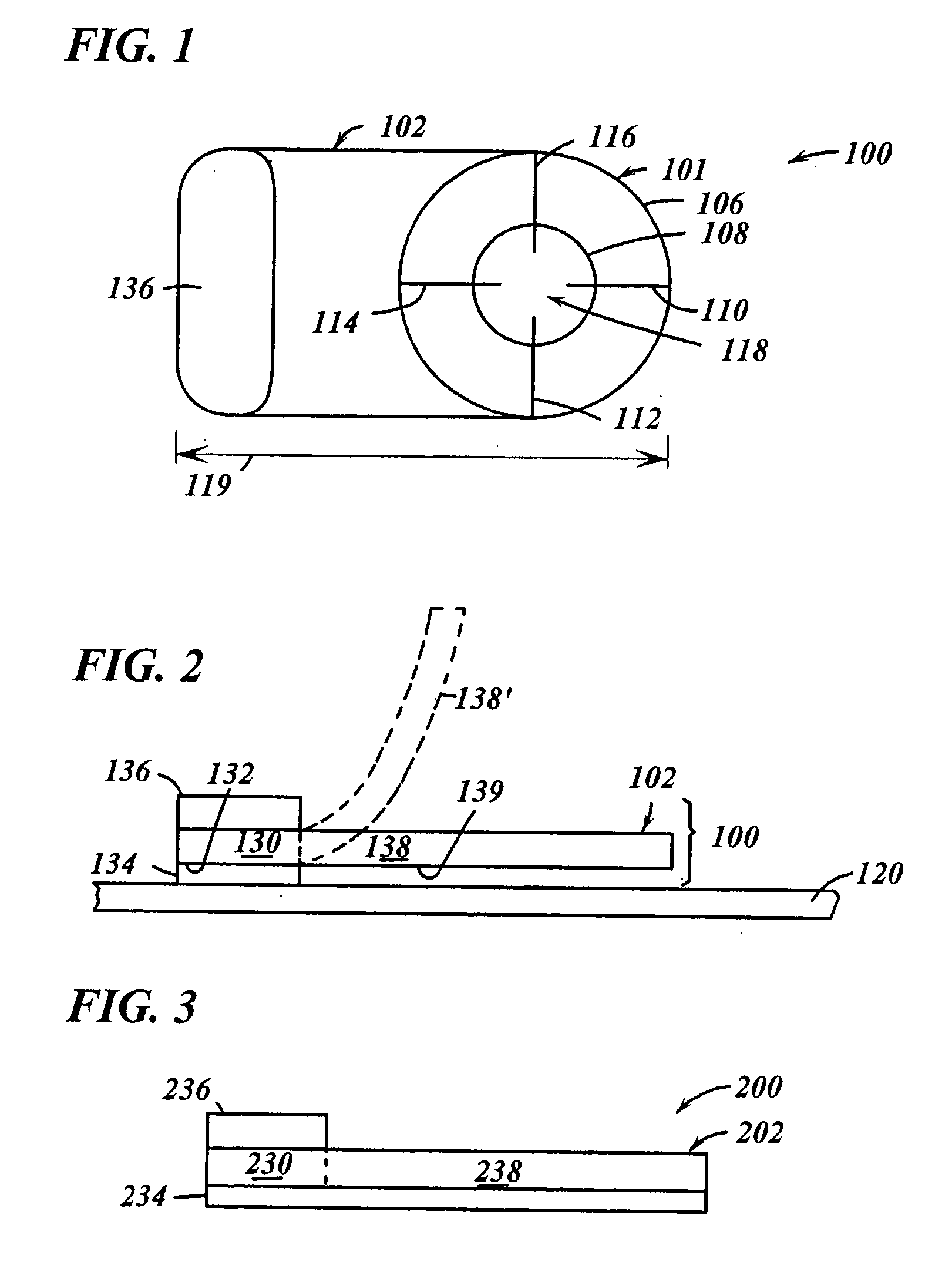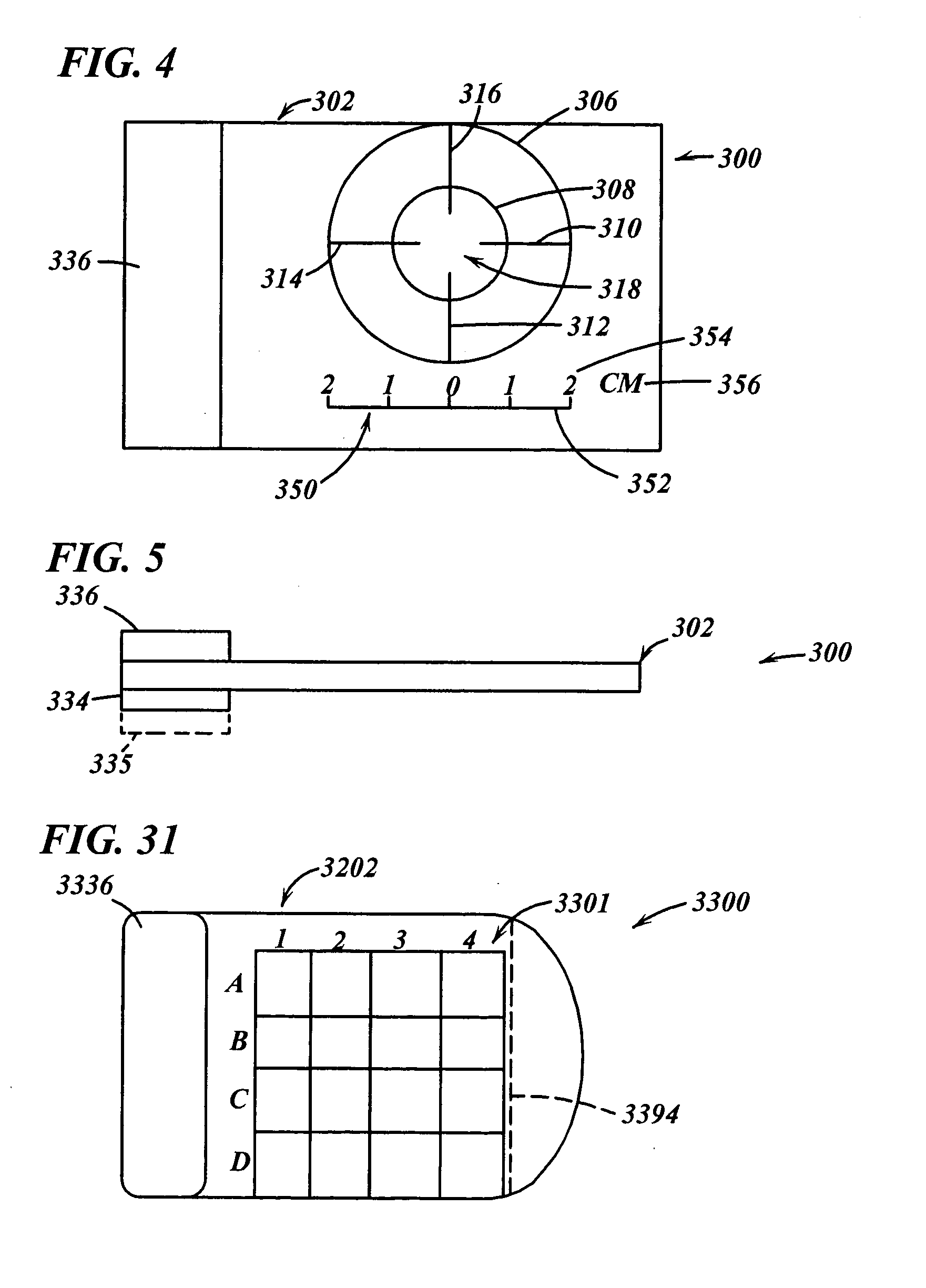Markers, methods of marking, and marking systems for use in association with images
a technology of marking system and image, which is applied in the field of marking system for use in association with images, can solve the problems of affecting the reading of the book
- Summary
- Abstract
- Description
- Claims
- Application Information
AI Technical Summary
Benefits of technology
Problems solved by technology
Method used
Image
Examples
second embodiment
[0079]FIG. 3 shows a side elevational view of a marker 200 according to a The marker 200 is similar to the marker 100 (except where otherwise noted, like reference numerals preceded by the numeral “2” instead of the numeral “1” are used to indicate like elements) except that the adhesive layer 234 of the marker 200 coats the underlying surfaces of both portions 230, 238 of the base 202. Thus, the adhesive layer 234 is preferably comprised of an adhesive that is substantially clear, and more preferably, transparent.
[0080] It should be understood that some other embodiments may employ adhesive on the underside of the second portion but not on the underside of the first portion.
third embodiment
[0081]FIGS. 4-5 show views of a marker 300 according to a The marker 300 is similar to the marker 100 (except where otherwise noted, like reference numerals preceded by the numeral “3” instead of the numeral “1” are used to indicate like elements) except that (i) the base 302 and paper tab 336 of the marker 300 have square corners and are somewhat larger than the base 102 and paper tab 136, respectively, and (ii) the base 302 includes added indicia (compared to the base 102) in the form of a gauge portion 350. The larger base allows a border around the target sight, without the need to reduce the size of the target sight. The gauge portion 350 includes a graduated portion 352, numeric indicia 354 and dimensional indicia 356. This type of gauge portion may be used for example, to determine the size of features appearing in a diagnostic image (e.g., diagnostic image 120 (FIG. 2)). Gauge portions (or any portion thereof) may also be employed on the other markers disclosed herein.
[0082...
fourth embodiment
[0083]FIGS. 6-7 show views of a marker 400 according to a The marker 400 is similar to the marker 100 (except where otherwise noted, like reference numerals preceded by the numeral “4” instead of the numeral “1” are used to indicate like elements) except that the marker 400 does not include a plain paper tab for notes. The first base portion 430 is made translucent or opaque and adapted to receive written notes.
PUM
 Login to View More
Login to View More Abstract
Description
Claims
Application Information
 Login to View More
Login to View More - R&D
- Intellectual Property
- Life Sciences
- Materials
- Tech Scout
- Unparalleled Data Quality
- Higher Quality Content
- 60% Fewer Hallucinations
Browse by: Latest US Patents, China's latest patents, Technical Efficacy Thesaurus, Application Domain, Technology Topic, Popular Technical Reports.
© 2025 PatSnap. All rights reserved.Legal|Privacy policy|Modern Slavery Act Transparency Statement|Sitemap|About US| Contact US: help@patsnap.com



